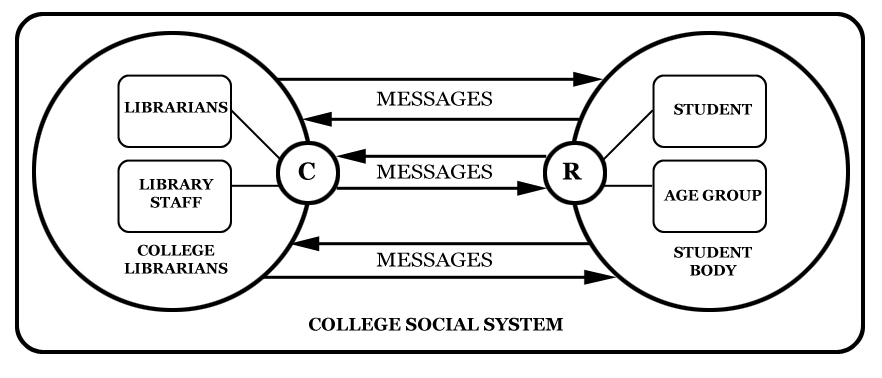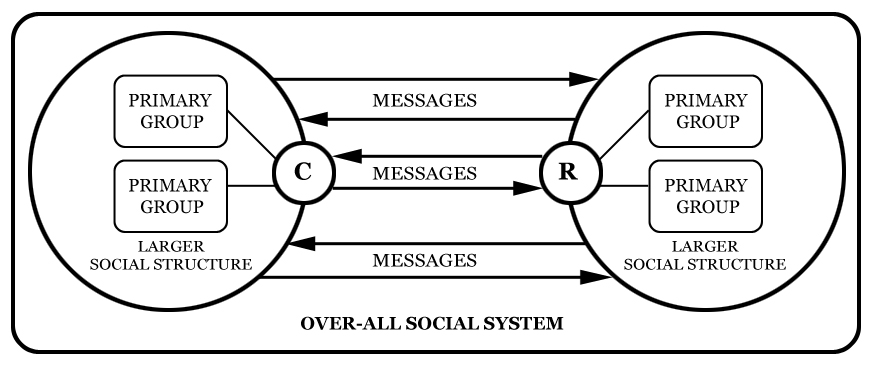Introduction:
John W. and Matilda White Riley, the husband and wife team of sociologists from Brunswick published many articles together on communication. The Riley developed a model to illustrate the sociological implications in communication. They discuss their ideas about communication theory in an article entitled “Mass Communication and the Social System” (Sociology Today, 1959). The basis for their ideas lies in the work of Aristotle and Lasswell, and point out the importance of the sociological view in communication in another way.
Riley & Riley Model:
- Larger Social Structure 1 contains Communicator, Primary Group a1 and a2. Communicator (c) is representing the larger social group 1.
- Larger Social Structure 2 contains Receiver, Primary Group b1 and b2. Receiver (R) is representing the larger social group 2.
- Larger Social group 1 and larger social group 2 is comes under the Over All Social System.
Who is this Primary Group ?
Primary groups are distinguished by their degree of intimacy say may be friends, relatives. There is also secondary group otherwise known as the reference group (though not mentioned in the figure) who doesn’t share a very intimate relationship with C or R but do influence in the communication process. e.g.: any organization C or R belong to (fan club).
The model indicates that the Communicator (C) sends a message with agreement to the expectations of the groups and other people in the larger social system. The communicator is a part of a larger social structure and the group is called as a “Primary Groups”. In simple words, a communicator is influenced by the primary group.
The Receiver is also works as like as Communicator which is also influenced by the other groups in the larger social system. The receiver (R) receives the feedback based on the communicator’s message from its primary social groups. Then send that feedback to communicator (C) to rectify any issues or problems.
The important point is the both Communicator and Receiver are a part of an over-all social system.
Importance of the Model:
- The model clearly illustrates that communication is a two-way proposition.
- Communicator and recipient are interdependent and interrelated by feedback mechanisms.
- Communicator and receiver are part of a larger social context (be it family, community, or work place); and are not acting in isolation.
Example:

Let’s say there has been a new library website unveiled, it is determined that the library terms, or jargon, used for navigating the website is confusing the students as they browse the site. The communicator (C) would be the library Dean and staff who have created the website and have included terminology and relate to (influence by the primary group). The college librarians would be the larger social structure in which Communicator (C) is a part of librarian’s staff community as well as student’s community.
The receiver (R) is the college student who does not understand the jargon and becomes frustrated in his/her search for information. The receiver, who is a member of sociological groups containing all students, has their own expectations which is relate to the library web site and how they navigate it.
The Receiver (R) informs about the issues directly to Communicator (c). Based on the receiver’s compliant, the communicator solves these issues by his primary group members (staffs).
This communication model helps to solve the dispute between the two groups in the large social structure as well as it evolves the better understanding between those two groups.

very ease to understand and the important points highlighted are evident
thanks for sharing this bruh.
Nice Website
it’s a great help thanks.